 Ahead of public hearings, US industry groups urge renewal of Canada-US-Mexico trade agreement. In other Business news: New Brunswick woodlot owner says the tariff situation is not sustainable; BC looks for new markets in the Far East; and no injuries reported at BiOrigin paper mill fire in Ontario. Meanwhile: Roy O. Martin III is recognized by Louisiana Tech; New Zealand welcomes the world’s first mass timber aircraft maintenance hangar; and Burnaby, BC, employs mass timber to add warmth to new ice arena.
Ahead of public hearings, US industry groups urge renewal of Canada-US-Mexico trade agreement. In other Business news: New Brunswick woodlot owner says the tariff situation is not sustainable; BC looks for new markets in the Far East; and no injuries reported at BiOrigin paper mill fire in Ontario. Meanwhile: Roy O. Martin III is recognized by Louisiana Tech; New Zealand welcomes the world’s first mass timber aircraft maintenance hangar; and Burnaby, BC, employs mass timber to add warmth to new ice arena.
In Forestry/Climate news: no roadmap emerged to end deforestation, but COP30 still delivered for forests; ENGO questions AAC determinations in BC; Montana thins to create grizzly bear habitat; ENGOs sue the US Forest Service over Nolichucky River logging; Colorado’s burned forests hold less snowpack; and Metsä Group sets up its own PEFC certification group. Meanwhile: the Forest History Association of BC’s AGM is tonight.
Finally, the BC Marmot Recovery Foundation is making progress, and it has the video to prove it.
Kelly McCloskey, Tree Frog News Editor

 The much-pilloried Canada-U.S.-Mexico trade agreement was signed seven years ago this weekend—on November 30, 2018. A year later, it was amended to address rules of origin for autos, digital trade, IP, dairy and, who could forget, a sunset clause. We can all do the math. The December 10, 2019 amendments set in motion a 16-year term for the agreement, with a mandatory review every six years. Which means we’ll see more of a requiem than a birthday bash next week when Mark Carney is in Washington to help kick off the 2026 FIFA World Cup. But don’t bury CUSMA just yet. Despite the U.S. President’s freeze on negotiations, officials from both countries are talking every day and laying the groundwork for what will be an intense 2026. Not many insiders seriously expect CUSMA to go away; they’re working on changes—modifications, enhancements, renovations, depending on your point of view—that will continue to change the fabric of continental commerce.
The much-pilloried Canada-U.S.-Mexico trade agreement was signed seven years ago this weekend—on November 30, 2018. A year later, it was amended to address rules of origin for autos, digital trade, IP, dairy and, who could forget, a sunset clause. We can all do the math. The December 10, 2019 amendments set in motion a 16-year term for the agreement, with a mandatory review every six years. Which means we’ll see more of a requiem than a birthday bash next week when Mark Carney is in Washington to help kick off the 2026 FIFA World Cup. But don’t bury CUSMA just yet. Despite the U.S. President’s freeze on negotiations, officials from both countries are talking every day and laying the groundwork for what will be an intense 2026. Not many insiders seriously expect CUSMA to go away; they’re working on changes—modifications, enhancements, renovations, depending on your point of view—that will continue to change the fabric of continental commerce. As Canada’s trade deal with the US and Mexico faces a crucial review, many US industries are urging the Trump administration to preserve the agreement and to stop putting tariffs on imports from its northern and southern neighbours. Ahead of the public hearings scheduled this week, some of the heaviest hitters in the U.S. manufacturing, industrial and retail sectors have submitted briefs extolling the agreement’s benefits to the domestic economy. …CUSMA is “the most pro-US manufacturing trade agreement in history,” said the National Association of Manufacturers, the largest organization in a sector that contributes $2.9 trillion US to the nation’s GDP. …The National Association of Home Builders calls on the Trump administration to scrap all tariffs on building material imported from Canada and Mexico, including Canadian softwood lumber, which it says “fills a unique niche in residential construction that is not easily replaced with domestic sources.”
As Canada’s trade deal with the US and Mexico faces a crucial review, many US industries are urging the Trump administration to preserve the agreement and to stop putting tariffs on imports from its northern and southern neighbours. Ahead of the public hearings scheduled this week, some of the heaviest hitters in the U.S. manufacturing, industrial and retail sectors have submitted briefs extolling the agreement’s benefits to the domestic economy. …CUSMA is “the most pro-US manufacturing trade agreement in history,” said the National Association of Manufacturers, the largest organization in a sector that contributes $2.9 trillion US to the nation’s GDP. …The National Association of Home Builders calls on the Trump administration to scrap all tariffs on building material imported from Canada and Mexico, including Canadian softwood lumber, which it says “fills a unique niche in residential construction that is not easily replaced with domestic sources.”
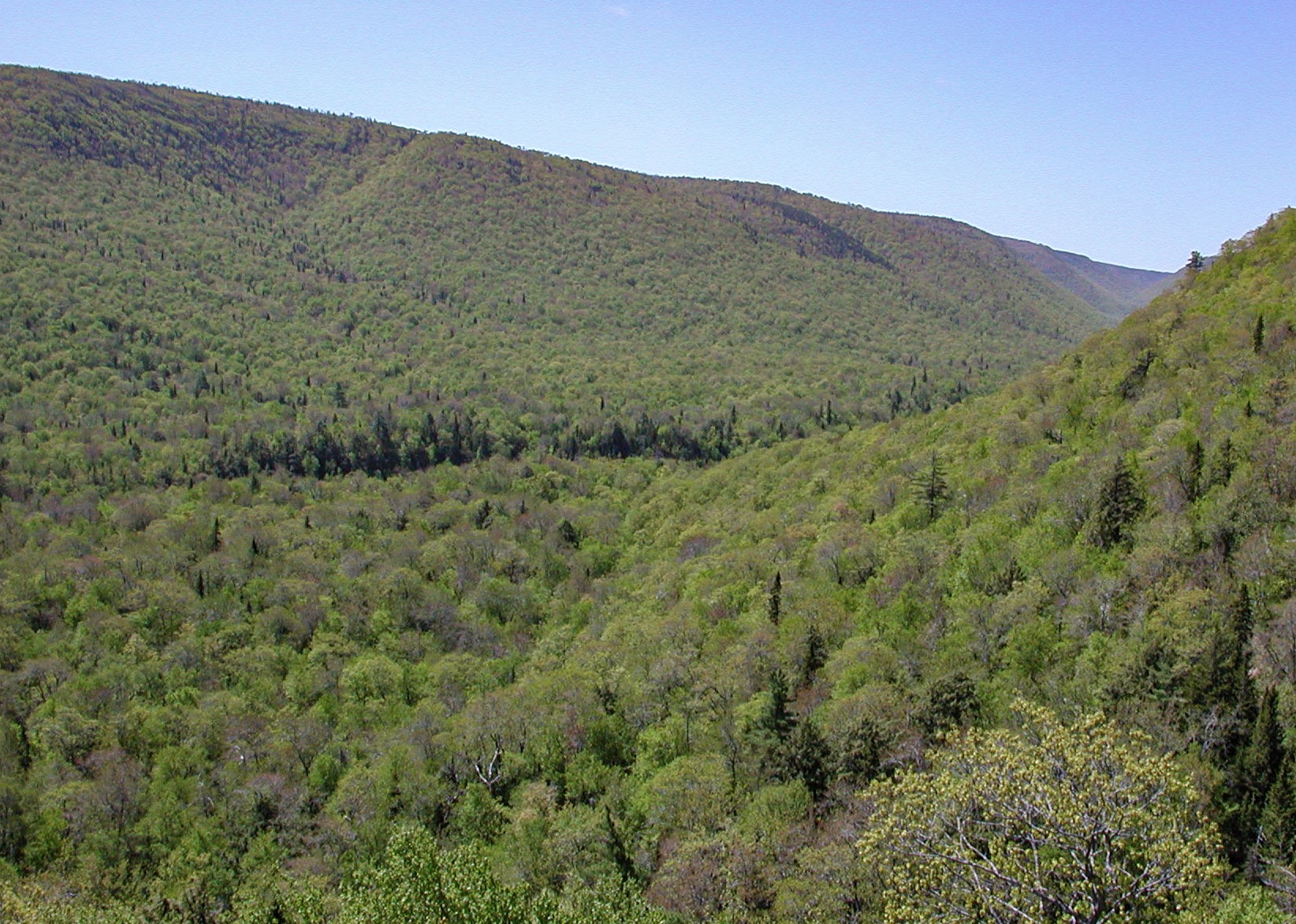 Private woodlot owner Andrew Clark says this year is one of the toughest he’s seen in the six decades he’s worked in the woods. For him, sales are ‘maybe 50 per cent’ of what they were last year. “It is the lack of markets which are the result of the tremendous uncertainty that the industry is in now because of the actions of the American government,” he said. He feels some of the federal government’s new supports – announced this week – could help. Prime Minister Mark Carney announced Wednesday a $500-million increase to the previously announced Softwood Lumber Development Program, which gives companies access to government-backed loans, totaling $1.2 billion. He also said Ottawa is working with railway companies to cut freight rates when transporting Canadian lumber across the country by 50 per cent. But Clark says the current situation – with the U.S. duties and tariffs amounting to 45 per cent – isn’t sustainable.
Private woodlot owner Andrew Clark says this year is one of the toughest he’s seen in the six decades he’s worked in the woods. For him, sales are ‘maybe 50 per cent’ of what they were last year. “It is the lack of markets which are the result of the tremendous uncertainty that the industry is in now because of the actions of the American government,” he said. He feels some of the federal government’s new supports – announced this week – could help. Prime Minister Mark Carney announced Wednesday a $500-million increase to the previously announced Softwood Lumber Development Program, which gives companies access to government-backed loans, totaling $1.2 billion. He also said Ottawa is working with railway companies to cut freight rates when transporting Canadian lumber across the country by 50 per cent. But Clark says the current situation – with the U.S. duties and tariffs amounting to 45 per cent – isn’t sustainable.





 The Forest History Association of BC is hosting its 43rd Annual General Meeting tonight, December 1, 2025 at 7:00 pm PST. All members are warmly invited to attend this virtual gathering and take part in shaping the direction of the organization for the coming year. The AGM will include key updates on current projects, board activities and election, and ongoing efforts to preserve and share BC’s forest and community history. For those interested in learning more about the FHABC’s mission—promoting research, storytelling, and education about the province’s rich forest heritage—visit their objectives
The Forest History Association of BC is hosting its 43rd Annual General Meeting tonight, December 1, 2025 at 7:00 pm PST. All members are warmly invited to attend this virtual gathering and take part in shaping the direction of the organization for the coming year. The AGM will include key updates on current projects, board activities and election, and ongoing efforts to preserve and share BC’s forest and community history. For those interested in learning more about the FHABC’s mission—promoting research, storytelling, and education about the province’s rich forest heritage—visit their objectives 
 I am writing to express my concern for the fate of B.C.’s remaining old growth forests, including the globally rare and at-risk Inland Temperate Rainforest. Most of this endangered forest is still not protected, and thus all creatures who dwell therein are equally unprotected. The Valhalla Wilderness Society … is putting forth a plan to protect the remaining intact Inland Temperate Rainforests through its three park proposals: the Rainbow-Jordan Wilderness proposal; the Selkirk Mountains Ancient Forest Park proposal; and the Quesnel Lake Wilderness proposal. This protection is crucial for the survival of these rare temperate rainforests. David Eby, you are undoubtedly well informed as to the many scientific reasons for protecting more forest, especially old growth forests…Importantly, only the BC Park Act and the BC Protected Areas Act can provide secure protection to preserve forest for future generations. Please adopt and implement the VWS park proposals as quickly as possible.
I am writing to express my concern for the fate of B.C.’s remaining old growth forests, including the globally rare and at-risk Inland Temperate Rainforest. Most of this endangered forest is still not protected, and thus all creatures who dwell therein are equally unprotected. The Valhalla Wilderness Society … is putting forth a plan to protect the remaining intact Inland Temperate Rainforests through its three park proposals: the Rainbow-Jordan Wilderness proposal; the Selkirk Mountains Ancient Forest Park proposal; and the Quesnel Lake Wilderness proposal. This protection is crucial for the survival of these rare temperate rainforests. David Eby, you are undoubtedly well informed as to the many scientific reasons for protecting more forest, especially old growth forests…Importantly, only the BC Park Act and the BC Protected Areas Act can provide secure protection to preserve forest for future generations. Please adopt and implement the VWS park proposals as quickly as possible. 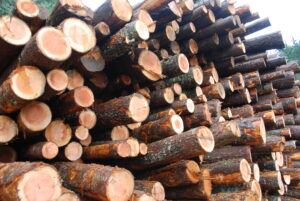 Prince George residents had better pay attention to last week’s report showing that unelected bureaucrats in Victoria are playing politics when they decide how much can be logged up here. I’ve been informed that our unelected Office of the Chief Forester, currently led by Shane Berg, is figuring out the Annual Allowable Cut (AAC) in the Prince George Timber Supply Area for the next 10 years. The process, known as a Timber Supply Review (TSR), masquerades as scientific and expert-driven, but in reality it’s politics. The amount we log is largely pre-determined and the game is how to manipulate the models and forests to achieve it. That’s why we get glyphosate with our blueberries and fertilizer-poisoned cattle. It’s why we don’t thin the plantations or do more selective logging. …The Office of Chief Forester prioritizes the “timber supply” over diverse, fire-resistant forests, as if the two are mutually exclusive.
Prince George residents had better pay attention to last week’s report showing that unelected bureaucrats in Victoria are playing politics when they decide how much can be logged up here. I’ve been informed that our unelected Office of the Chief Forester, currently led by Shane Berg, is figuring out the Annual Allowable Cut (AAC) in the Prince George Timber Supply Area for the next 10 years. The process, known as a Timber Supply Review (TSR), masquerades as scientific and expert-driven, but in reality it’s politics. The amount we log is largely pre-determined and the game is how to manipulate the models and forests to achieve it. That’s why we get glyphosate with our blueberries and fertilizer-poisoned cattle. It’s why we don’t thin the plantations or do more selective logging. …The Office of Chief Forester prioritizes the “timber supply” over diverse, fire-resistant forests, as if the two are mutually exclusive. Researchers with the Nature Trust of New Brunswick are on the hunt for four different types of lichens and they’ve found one – in an unusual spot. The scaly fringe lichen, known scientifically as heterodermia squamulosa, was found between Alma and Riverside-Albert, east of Fundy National Park. “As far as I know, it’s the most eastern recorded occurrence of the species to date,” said Ilana Urquhart, a conservation coordinator with the Nature Trust. …Urquhart said lichens can be a good indicator of a healthy environment that can support a variety of species. “We might not directly see what the importance of them is, but they’re often found in areas that are really rich, that are biodiverse.” The biggest threat to lichens is habitat loss, according to Urquhart, which can be caused by logging and harvesting.
Researchers with the Nature Trust of New Brunswick are on the hunt for four different types of lichens and they’ve found one – in an unusual spot. The scaly fringe lichen, known scientifically as heterodermia squamulosa, was found between Alma and Riverside-Albert, east of Fundy National Park. “As far as I know, it’s the most eastern recorded occurrence of the species to date,” said Ilana Urquhart, a conservation coordinator with the Nature Trust. …Urquhart said lichens can be a good indicator of a healthy environment that can support a variety of species. “We might not directly see what the importance of them is, but they’re often found in areas that are really rich, that are biodiverse.” The biggest threat to lichens is habitat loss, according to Urquhart, which can be caused by logging and harvesting. TROY, Montana — Vincent Logging, a family-owned logging company in Libby is working with Hecla Mining Company to manage its forested lands for wildlife habitat. It’s a 15-hundred acre research project to determine which management techniques provide the best habitat for endangered species. …It’s forest land in the Bull Lake area on Hecla Mining property near Troy. “We’re going to create grizzly bear habitat or enhance existing habitat for the bear,” he said. “Doing so, will enhance habitat for all the other critters that are living in here or that might live in here. We’re also studying it for success or failure at the same time.” Chas said thinning small diameter trees opens the area to create more plants that grizzlies like to eat. Larger diameter trees and thickets are left untouched to create a safe haven for the bears.
TROY, Montana — Vincent Logging, a family-owned logging company in Libby is working with Hecla Mining Company to manage its forested lands for wildlife habitat. It’s a 15-hundred acre research project to determine which management techniques provide the best habitat for endangered species. …It’s forest land in the Bull Lake area on Hecla Mining property near Troy. “We’re going to create grizzly bear habitat or enhance existing habitat for the bear,” he said. “Doing so, will enhance habitat for all the other critters that are living in here or that might live in here. We’re also studying it for success or failure at the same time.” Chas said thinning small diameter trees opens the area to create more plants that grizzlies like to eat. Larger diameter trees and thickets are left untouched to create a safe haven for the bears.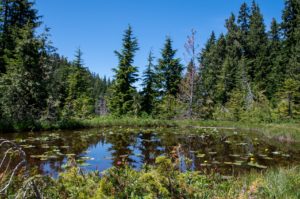 As the US Forest Service considers the future management of the Tongass National Forest, I hope that Alaska’s congressional delegation will listen to what Southeast Alaskans already know: Wild salmon are one of the Tongass’ most valuable resources. If we leave the trees standing and protect the habitat that fish need, the Tongass will continue to generate billions of dollars in natural dividends, in turn supporting thousands of fishing jobs and providing millions of pounds of nutritious seafood year after year. …For decades, Southeast Alaska’s communities and fishermen have fought industrial logging in the Tongass. …The harmful impacts of industrial logging on Southeast Alaska’s salmon watersheds and our natural dividends are not hypothetical. Protecting the Tongass is the most cost-effective way to improve ecosystem productivity and ensure the well-being for all who call Southeast home.
As the US Forest Service considers the future management of the Tongass National Forest, I hope that Alaska’s congressional delegation will listen to what Southeast Alaskans already know: Wild salmon are one of the Tongass’ most valuable resources. If we leave the trees standing and protect the habitat that fish need, the Tongass will continue to generate billions of dollars in natural dividends, in turn supporting thousands of fishing jobs and providing millions of pounds of nutritious seafood year after year. …For decades, Southeast Alaska’s communities and fishermen have fought industrial logging in the Tongass. …The harmful impacts of industrial logging on Southeast Alaska’s salmon watersheds and our natural dividends are not hypothetical. Protecting the Tongass is the most cost-effective way to improve ecosystem productivity and ensure the well-being for all who call Southeast home. 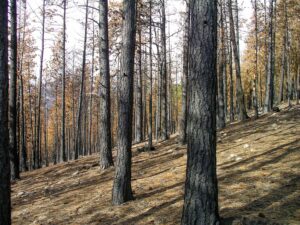 As the American West warms due to climate change, wildfires are increasingly burning in higher-elevation mountains, charring the watersheds where the region’s vital snowpack accumulates. A new study has found that in the immediate aftermath of fires across the region, the snowpack disappears earlier in burned areas. This change can threaten forest health and affect the downstream farms, cities and species that rely on the snowpack for their water, according to other research. Scientists who study the effects of wildfires on the snowpack and streamflows are finding that the story is complex and nuanced. The impacts can vary greatly across the West’s diverse ecosystems and topography. Plus, each wildfire burns differently, so the severity of the blaze is another critical factor. …Published in the Sept. 17 issue of
As the American West warms due to climate change, wildfires are increasingly burning in higher-elevation mountains, charring the watersheds where the region’s vital snowpack accumulates. A new study has found that in the immediate aftermath of fires across the region, the snowpack disappears earlier in burned areas. This change can threaten forest health and affect the downstream farms, cities and species that rely on the snowpack for their water, according to other research. Scientists who study the effects of wildfires on the snowpack and streamflows are finding that the story is complex and nuanced. The impacts can vary greatly across the West’s diverse ecosystems and topography. Plus, each wildfire burns differently, so the severity of the blaze is another critical factor. …Published in the Sept. 17 issue of 

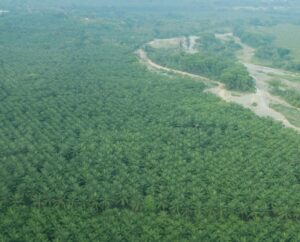 As he officially opened COP30, Brazil’s president, Lula Inacio da Silva said “the world will finally be able to say that it truly knows the reality of the Amazon”. …Last year the biggest cause of forest loss in the Amazon was fires, which were ignited to clear land for agricultural expansion or illegal mining. Despite a pledge made at COP26 in Glasgow in 2021 to halt and reverse deforestation by 2030, another 8.1 million hectares of forest were lost globally last year. Lula called for a consensus on a roadmap to deliver on the Glasgow deforestation promise. …But while more than 90 countries supported a deforestation roadmap, opposition from the likes of Saudi Arabia, Russia and India meant deforestation failed to make it to the final agreement, and COP president Andre Correa do Lago said Brazil would continue to work on developing one over the next year, to present at COP 31 in Turkey.
As he officially opened COP30, Brazil’s president, Lula Inacio da Silva said “the world will finally be able to say that it truly knows the reality of the Amazon”. …Last year the biggest cause of forest loss in the Amazon was fires, which were ignited to clear land for agricultural expansion or illegal mining. Despite a pledge made at COP26 in Glasgow in 2021 to halt and reverse deforestation by 2030, another 8.1 million hectares of forest were lost globally last year. Lula called for a consensus on a roadmap to deliver on the Glasgow deforestation promise. …But while more than 90 countries supported a deforestation roadmap, opposition from the likes of Saudi Arabia, Russia and India meant deforestation failed to make it to the final agreement, and COP president Andre Correa do Lago said Brazil would continue to work on developing one over the next year, to present at COP 31 in Turkey.